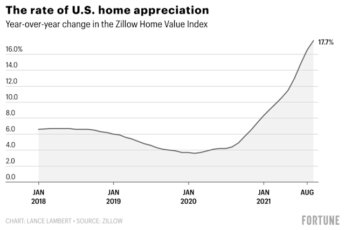Did you know that Pennsylvania was a new England colony? The colony was free from public debt and military, and had few taxes and no military. It was not a traditional new England colony. It was also a relatively prosperous place to live. Read on to learn more about this state’s history. Here are some interesting facts about Pennsylvania and the founding of its government. And don’t forget to check out our Pennsylvania history quiz for even more fun facts.
Pennsylvania was a new England colony
King Charles II of England owed Admiral Sir William Penn PS16,000, and as a result, he granted him land in what is now Pennsylvania, a region that spans about 40,000 square miles. King Charles officially proclaimed Pennsylvania on April 2, 1681. The territory was initially named New Wales, but the Welsh member of the Privy Council disagreed, and Penn renamed it Sylvania. King Charles then changed the name again, to Penn’s Woods.
Because of the abundant natural resources, Pennsylvania was able to establish many industries early on. Arts and crafts flourished in this region, and sawmills and gristmills used streams to grind grain. The homespun textiles produced in the colony were woven and spun by women, and shipbuilding became a major industry along the Delaware. Iron production grew, too, and the Pennsylvania long rifle (a variant of the German hunting rifle), was invented in the colony.
A large number of Germans migrated to the new colony in search of a better life, and they made up about a third of the population by the time of the Revolution. German immigration from the Rhineland increased after 1727, and Germans primarily settled in the interior counties of Pennsylvania. German immigrants made the region a rich farming land, and they contributed greatly to the expansion of prosperity throughout the province.
It had no military
When Pennsylvania was a new England colony, it lacked a standard military organization. While several independent militia organizations existed in the colony, its military was not uniform. The increasing conflict necessitated a more unified institution. Assemblyman Benjamin Franklin, for example, gained support for the first militia law in 1755. This law followed the New England model of allowing men to select their own officers, but the governor’s opposition made this approach unacceptable.
At this time, the Quakers in Pennsylvania were divided over their role in the military. Some leaders opposed the military, while others saw defense as an important Quaker mission. As a result, some Quakers supported the use of military measures and spent money on the army, though they were reticent to vote for them once the war started. Some Quakers, however, supported the use of military measures and viewed the Quaker community’s role in the war as justification for their existence.
The presence of Germans in Pennsylvania also contributed to the province’s expansion. In 1730, German immigrants began settling in Pennsylvania, and their numbers increased rapidly thereafter. After the Revolution, Germans were the largest group of immigrants, with most coming from the Rhineland. They settled in the interior counties, turned the area into a thriving farming region, and contributed to the expanding prosperity of the colony.
It had few taxes
Although Pennsylvania had relatively few taxes for being a new England colonial state, it had a high population, which led to rapid growth. The colony soon became as big as New York, with Philadelphia becoming one of the biggest cities in North America. Taxes were low in Pennsylvania, but the state’s wealth was largely from the colony’s booming economy. In addition, the colony was mostly free from religious and civic disputes.
The colony grew rapidly as the British established colonies throughout the New World. However, Pennsylvania had few taxes for being a new England colony, as it was a wealthy and privileged area. William Penn, the colonial governor, was an English Whig who hoped to create a prosperous and diverse new colony based on his liberal ideas. Although not a radical, the English entrepreneur was attached to basic Whig doctrine and sought to implement it in the New World.
It had no public debt
Before the United States became a nation, the colonies were under considerable taxation. In Pennsylvania, taxes varied according to wealth, with residents paying no poll tax if their assets were worth less than PS30. Adult males paid a reduced poll tax of six shillings. Farmers, however, fought against the low taxes, consistently undervaluing their property and overvaluing their produce. The colonial governor in New York warned the English Crown against tax enforcement and the imposition of new taxes.
The Pennsylvania Charter was not comprehensive, however. The colonial government was set up by Penn’s Frame of Government in 1683 and consisted of a proprietor and an appointed governor. The largest branch of government was the Pennsylvania Provincial Assembly. This body enacted laws with the assent of the freemen and deputies and submitted them to the Privy Council within five years. Pennsylvania was required to follow the trade laws set by Parliament, which included the sale of most commodities to England.
The treasury issued bills, which were receipts from the colonies. Notes were called in and destroyed each year. This law prevented the colony from incurring more debt than it could pay back. Nevertheless, the state maintained an overall stock of paper currency in New England. Its second smallest colony, Rhode Island, issued more currency than Connecticut, New Hampshire, and Massachusetts. Meanwhile, the price of silver in Boston increased by 4.3 percent per year, indicating a large rate of inflation.
It had Quaker religious beliefs
William Penn viewed the colony of Pennsylvania as a religion, and he designed laws to accommodate Quakers’ religious beliefs. For example, there were no oaths in courts, and Quaker-style marriage ceremonies were legal. Additionally, religious liberty was extended to all monotheists. In other words, Pennsylvania’s religious freedom was unprecedented. This is one of the reasons Pennsylvania’s economic growth was so impressive.
Philadelphia Quakers began to embrace liberal theological ideas. Some espoused the principles of equality and simplicity. Others sought to improve society. Philadelphia Quakers intermarried with non-Quakers, and their observance of plain dress and speech were abandoned. The Quakers’ commitment to peace and pacifism were so strong that their presence at the United Nations was widely recognized. The Quaker United Nations Office, which began in 1945, represents a unique example of how their beliefs were shaped by the Quaker experience.
In the late eighteenth century, Quakers in Philadelphia were vocal about slavery and were pioneers in reforming society. They started many philanthropic societies in the city to improve life for their fellow citizens. The Female Society for Relief of the Distressed, founded in the 1790s, provided clothing for poor women and founded the Aimwell School, which offered primary education to poor girls. In addition, the Philadelphia Society for Humanity established the Quaker Community of Philadelphia.
It had Scotch-Irish immigrants
While a significant portion of Americans are of Irish descent, Scotch-Irish immigrants were also a large part of Pennsylvania’s history. As early as the eighteenth century, Scotch-Irish emigrants began leaving Ireland in large numbers in search of a new home where they could practice their Presbyterianism in peace. Thankfully, Pennsylvania was more accommodating to this population than other states were and by 1749, they represented 25 percent of the population. However, as the sheep raising industry became very popular in the early nineteenth century, many Scotch-Irish people were forced to leave their homes and come to the United States.
The book focuses on the contributions of Scotch-Irish people to the history of Pennsylvania. Divided into six chapters, this book explores the experiences of Scotch-Irish immigrants in Pennsylvania. It begins by following the migration of Scottish Presbyterians to northern Ireland in the seventeenth century, continues into the eighteenth century, and concludes with the Irish diaspora’s arrival in Pennsylvania in the early nineteenth century.
In the early eighteenth century, Irish immigrants from Ulster began moving to Pennsylvania and other parts of the United States. By the middle of the century, they were widely known as Scotch-Irish. Edmund Burke wrote about the Irish in Pennsylvania in 1757, and Jedidiah Morse’s book The American Geography chronicles the Irish migration to the state. There is also a small Scottish community in the Pittsburgh area.
Did you know that Disney World covers over 25,000 acres? The park features three distinct regions: Magic Kingdom, Epcot, and Animal Kingdom. And it also has a sand bottom pool! With so much to do, you’re bound to find something that excites you! Here are a few ways to learn about Disney World. Whether you’re a first-timer or a lifelong fan, this article will help you learn the basics about this world-class theme park.
Disney World is the largest theme park in the world
The Walt Disney World resort is officially the largest theme park in the world. Its boundaries include four theme parks and are 27,000 acres in total. The largest, Disney’s Animal Kingdom, is 405 acres in size and is the largest theme park in the world. There are plans to expand the parks in the future. Despite the massive size, the theme parks have many smaller areas and a wide variety of attractions.
Epcot is the second theme park in Disney World, which opened in 1982. The park has over 305 acres and features nine pavilions modeled after different cultures around the world. Each of the countries has its own unique culture represented by their country’s pavilions. Food is plentiful and the parks provide ample opportunities to buy souvenirs. One pavilion, The Land, celebrates the culture of India, Japan, China, Australia, and other nations.
Disneyland Tokyo opened in 1983, making it the first overseas expansion of the Walt Disney Company. Tokyo Disneyland has a blend of Japanese and American culture and is best known for its unique merchandise. Pooh’s Hunny Hunt is one of the most popular rides in the park, while others include Monsters, Inc. Ride and Go-seek. If you’ve ever dreamed of living in a theme park, this is definitely a destination worth checking out.
In addition to its four main theme parks, Disney also has a water park and four golf courses. The park is also home to 25 hotels. Almost half of the land is used for parks and resorts, but the remainder is a conservation area. The resort is estimated to receive 50 million visitors per year. The resort is one of the most popular tourist destinations. So, if you’re in the Florida area, plan a trip to Walt Disney World and enjoy all that it has to offer.
It covers over 25,000 acres
Walt Disney World is a sprawling entertainment complex in Florida. The entire area covers over 25,000 acres, which is approximately twice the size of San Francisco or Manhattan island. If you’re planning to visit Disney World, you’ll want to consider how much walking you’ll have to do. This massive complex contains four theme parks, two water parks, 36 hotels, and a golf course. It also has several restaurants, shops, and other attractions. Walt Disney’s dream of creating a huge theme park began around the mid-1950s. He began surveying the area surrounding Orlando and purchased land through dummy corporations.
The park’s conservation plan includes the use of wildlife management conservation areas and conservation easements to protect the land. Over 32% of Disney World is set aside for wildlife habitat and conservation. This means that nearly half of the park’s land cannot be developed. It also features wetlands and wildlife habitat. Wildlife is an essential part of any theme park. However, some of the land is too pristine for humans to visit and is therefore best left undeveloped.
Disney World covers over 25,000 acres and is composed of several zones. The resort’s undeveloped areas include the «Suitable» area, which comprises 19.9% of Disney World’s land. Marginal Suitable areas are those with certain constraints that prevent development. These areas are also known to have specific wetlands. In general, it’s strongly discouraged to develop in these areas. So, if you’re planning to visit Disney World, make sure you take a tour map of the park before you go.
Disney World covers over 25,000 acres, but that doesn’t mean it’s too big to be developed. In fact, only 20% of the land can be developed, so there is still plenty of room for expansion. Disney is a responsible corporate citizen, and they’ll be very careful not to waste any more land — because they want to keep the entire area as beautiful as possible. The area is so large, Disney will never run out of space.
It has a sand-bottom pool
If you’re a water baby, you’ll be delighted to learn that Disney World has a sand bottom pool. You can relax in this shallow water as the Disney’s Beach Club offers lifeguards to supervise your child’s swimming, and the resort provides free floatation vests and towels. If you’re a little more adventurous, try Stormalong Bay at the Contemporary Resort, a short walk away from the Magic Kingdom.
Stormalong Bay: This three-acre aquatic playground has a sand bottom and gentle currents. Its 230-foot waterslide and lazy river add to the realistic beach vacation feel. For the kids, there’s also a kiddie pool, a whirlpool spa, and a pirate ship-shaped water slide. And if you’re traveling with a partner, you can enjoy a zero-entry beach area.
The Big Blue Pool: The pool surrounding this water attraction is themed in the ocean. The buildings surround it depict various parts of the ocean, including sharks, fish, and coral. This water park was recently refurbished so that kids can enjoy the pool. The Big Blue Pool features zero-entry points and huge jellies. It’s a fun place for families to relax, so make sure to visit during the summer months!
The Big Blue Pool: Located at Disney’s Art of Animation resort, the Big Blue Pool is a fun, zero-entry water feature for younger children. The oversized Crush and a massive jellyfish adorn the pool’s underwater speakers. The pool is 308,527 gallons and is designed to be a kid-friendly destination. You can also enjoy the Big Blue Pool’s underwater sound by tuning into a speaker underwater.
It has golf courses
If you’re a lover of golf and Walt Disney World is on your bucket list, you’re in luck! The world’s most famous theme park also has four championship golf courses on its property. You can play a round of golf on any of these golf courses and enjoy year-round warm weather. Whether you play the championship courses for fun or to compete in a tournament, Walt Disney World has a course for you.
The courses at Disney World are dotted with wildlife and span scenic natural areas. In fact, many of them are designated Cooperative Wildlife Sanctuaries by Audubon International. In addition to the typical turkey, you might even see Bambi and his friends. Beware, though; these friendly creatures are not fond of golf balls! Here are some tips for playing golf at Walt Disney World:
Before you play a round of golf at Walt Disney World, check the website and call ahead to make sure you have reservations. During peak season, the Palm Course and Lake Buena Vista Golf Courses are closed, but you can still play them during off-peak hours. To make reservations, call 407 WDW-GOLF (407) and submit a detailed request. The DFB newsletter is another way to get the latest news about openings and closing dates.
Guests can also find a course near Disney World Resort. Among these is the Magnolia Golf Course, which was once the end-of-season venue for the PGA Tour. This 18-hole layout was the longest of the Disney World golf courses. Major renovations were completed in 2015 and are expected to continue into the next decade. If you’re looking for a challenging round of golf, it’s worth checking out the Magnolia course near the Disney World Resort.







